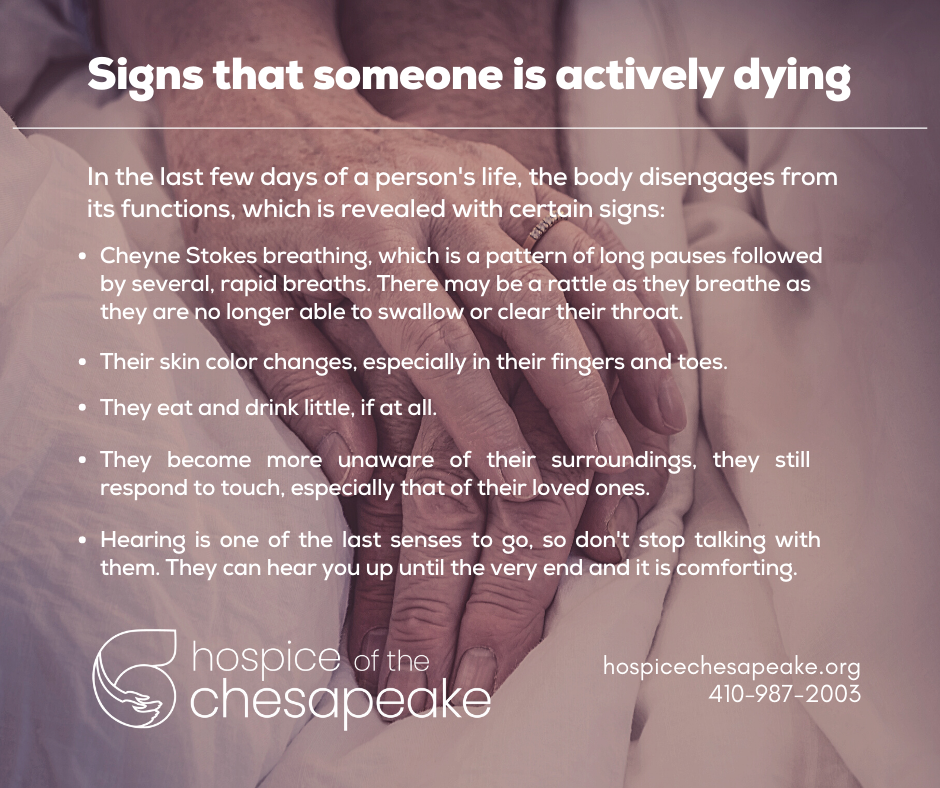In the United States, there are a lot of myths about the act of dying. In movies, we often see these dramatic moments where they clutch their chest, take a boisterous last gasp of air and then suddenly, they are dead. The reality is much less dramatic, at least in the case of non-traumatic deaths. You will often hear it called “actively dying.”
Actively dying is the final phase of life that typically lasts three days. There will be signs that their body is disengaging from its many functions: There is a drop in blood pressure as the heart relaxes, even the muscles in the back of their throat relax, which can cause a rattling sound as they are no longer able to clear their throat.

As they get closer to death, they can experience Cheyne Stokes breathing, which is a pattern of long pauses followed by several, rapid breaths. Also, the color changes in their fingers and toes, because as their heart relaxes, their body relaxes and there is less blood flow to the part of the body farthest from the heart. It does not cause your loved one distress. It is just another indicator that things are changing for them.
Several days before the actively dying phase, there is a period called transitioning. At that time, the patient is less responsive. They may respond to focused questions with one- or two-word answers or perhaps nod their head yes or no. But again, it’s all in line with the disengagement process. The hospice care team’s focus for this phase is making sure the patient is comfortable, not only in pain management, but also in the changing functions of their body. Once we have achieved that comfort level, we take it a day at a time. There is still so much that is unknown about how the human body, mind and spirit experiences end of life, but we know that managing their symptoms helps to make that process easier.
Though it seems a person who is actively dying is unaware of who is in their room, there are two things that patients can still sense. One is touch, especially that of their loved ones. We also know that hearing is one of the last senses to go — patients can hear up until the very end. We are not sure how much they can process, but if they are going to respond at all, they respond better to their loved one’s voice than they would to the care team.
Reminisce with them, tell them things you think they would want to hear, things that would be comforting or soothing. We know the patients find their loved ones’ voices soothing. It is often therapeutic for the loved ones, too.
With that in mind, talk to your loved one as you have every day of their life. Their character, logic and personality do not change at that time life. If anything, those things are enhanced. So, reminisce with them, tell them things you think they would want to hear, things that would be comforting or soothing. We know the patients find their loved ones’ voices soothing. It is often therapeutic for the loved ones, too.
Dying is hard to think and talk about. But it is important to try to understand the process of one’s final days. Just like everything else, the more education you have, the more you know what to expect.
Learn more about the dying process in this Community Education Video:


